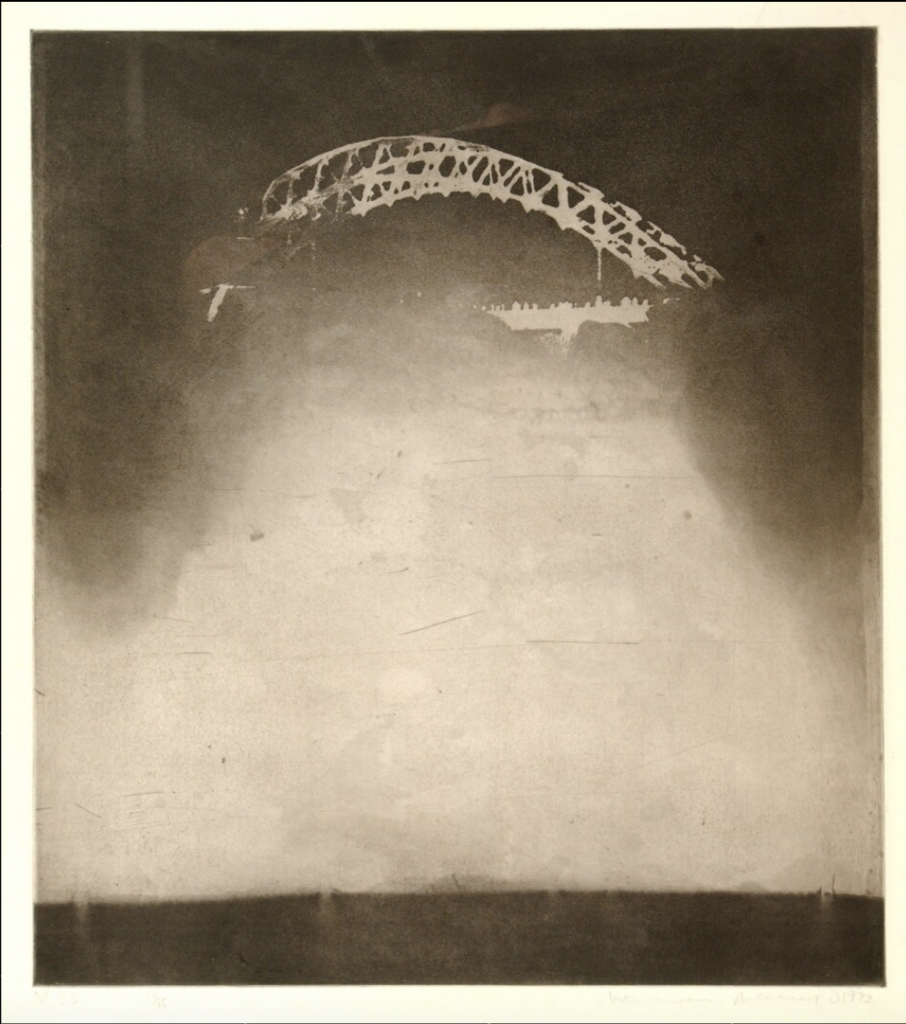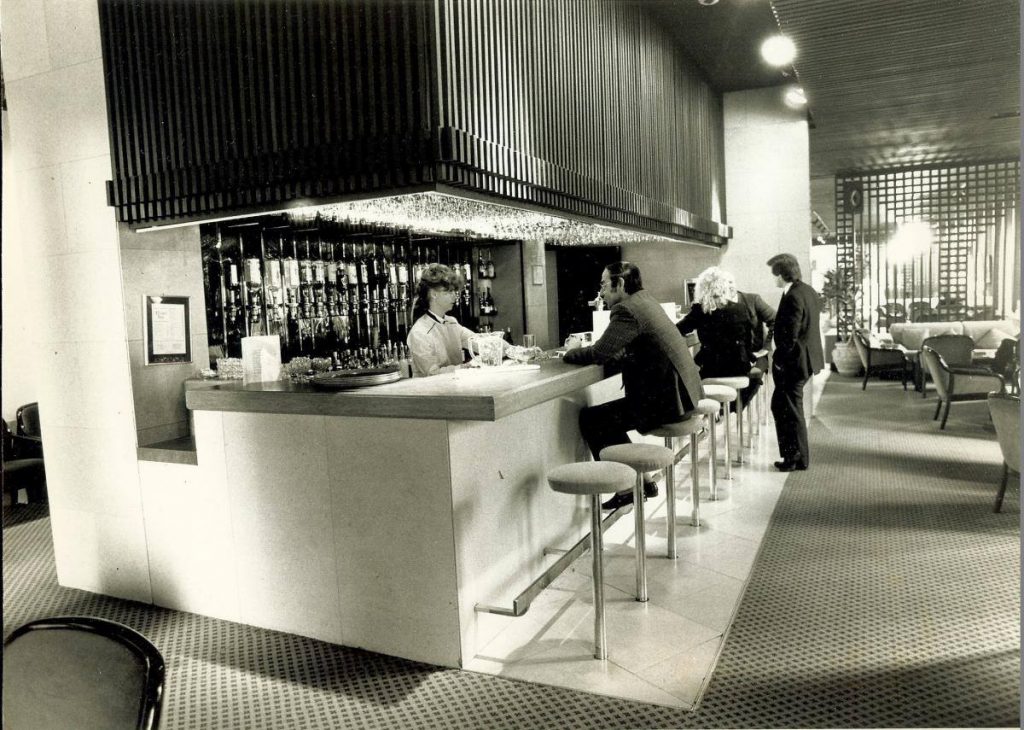In the early 1970s, the Albany Hotel in Glasgow commissioned Norman Ackroyd to create a series of work to display in their hotel. The series of etchings––created while traveling up the east coast of Britain to John O’Groats, then back down the west––are likely a familiar sight to visitors of the Art Collection at Pathfoot, where they are being exhibited as part of our themed year celebrating ‘Space & Place.’
Born in Leeds in 1938, Ackroyd studied at Leeds College of Art (1956 to 1961) and the Royal College of Art (1961 to 1964) and now resides in London. He is best known for his etchings and engravings, having created around 700 independent etchings over the years. He has used the medium to demonstrate the intensity of the British and Irish coasts, favouring extreme landscapes such as St Kilda, the Isle of Pavey and Malin Head. Waking up before dawn, Ackroyd would find himself working between twelve to fifteen hours a day to capture the scenery. The magic, he says, is “in the idea that you’re seeing a place as the people who came before saw it, whether it’s monks who built their monasteries on remote islands or the cattlemen who used this drove road for centuries […] A lot of the places I portray haven’t changed in a thousand years.”
The result is a body of work suffused with depth and drama, each to varying degrees depending on technique. Some plates are just ‘kissed’ with acid to create subtle tones and soft, misty flares of light and shadow. Others are submerged in an acid bath to hold more ink, creating darker silhouettes and deeper lines.
I love the idea […] that out of something as awkward as copper and acid, you can achieve something incredibly soft and lyrical, that’s as delicate as watercolour.
Norman Ackroyd, The Telegraph
Ackroyd created the Albany Hotel Murals by drawing directly onto zinc plates which were then worked up in his studio. He made 48 plates in total, etched with nitric acid and perchloride of iron (“an etching workshop without acid is like a pub with no beer,” he says), created in two batches during April and July 1972. A limited edition of ten plates was subsequently selected and published by Ackroyd in conjunction with the Compass Gallery, Glasgow in January 1973. It is nine of these ten works that are currently on display at the Art Collection.
The etchings are certainly unforgettable. In an article discussing the Albany Hotel interior from a 1973 edition of Design Journal, the etchings are referred to as “darkly evocative,” said to help enhance the atmosphere of the dark and restful Albany bar. In his 1983 novel The Papers of Tony Veitch, Scottish crime author William McIlvanney described the murals as “black holes in which whispers of light and shape were conspiring to survive.” The etchings have a similarly evocative effect here at the Art Collection, sparking curiosity and captivating the interest of students and visitors. Ackroyd’s works capture an enchanting world where an elusive dance between light and form takes place to explore the boundaries of space and place.
You can see the artworks in Gallery 1 at Pathfoot, Monday-Friday 9am-5pm.
Sources:
- www.telegraph.co.uk/art/artists/norman-ackroyd-interview-acid-free-etching-like-alcohol-free/
- www.bl.uk/voices-of-art/articles/cathy-courtney-a-sense-of-place-norman-ackroyd
- www.vads.ac.uk/digital/collection/DIAD/id/7303
- www.jstor.org/stable/26408787?seq=4
- www.pressreader.com/uk/the-daily-telegraph-telegraph-magazine/20190202/282531544638982
- www.glasgowtimes.co.uk/news/14397407.former-hotel-to-the-stars-site-becomes-10-storey-office-block/
- www.thetelegraphandargus.co.uk/news/17341312.norman-ackroyds-evocative-etchings-the-furthest-lands-show-yorkshire-sculpture-park/



